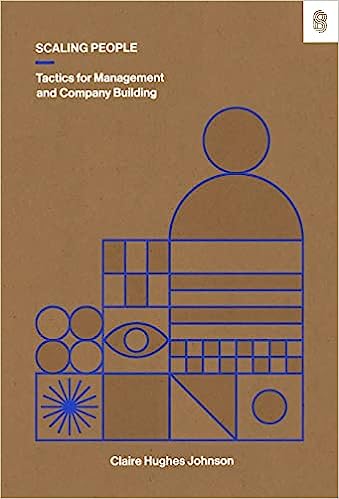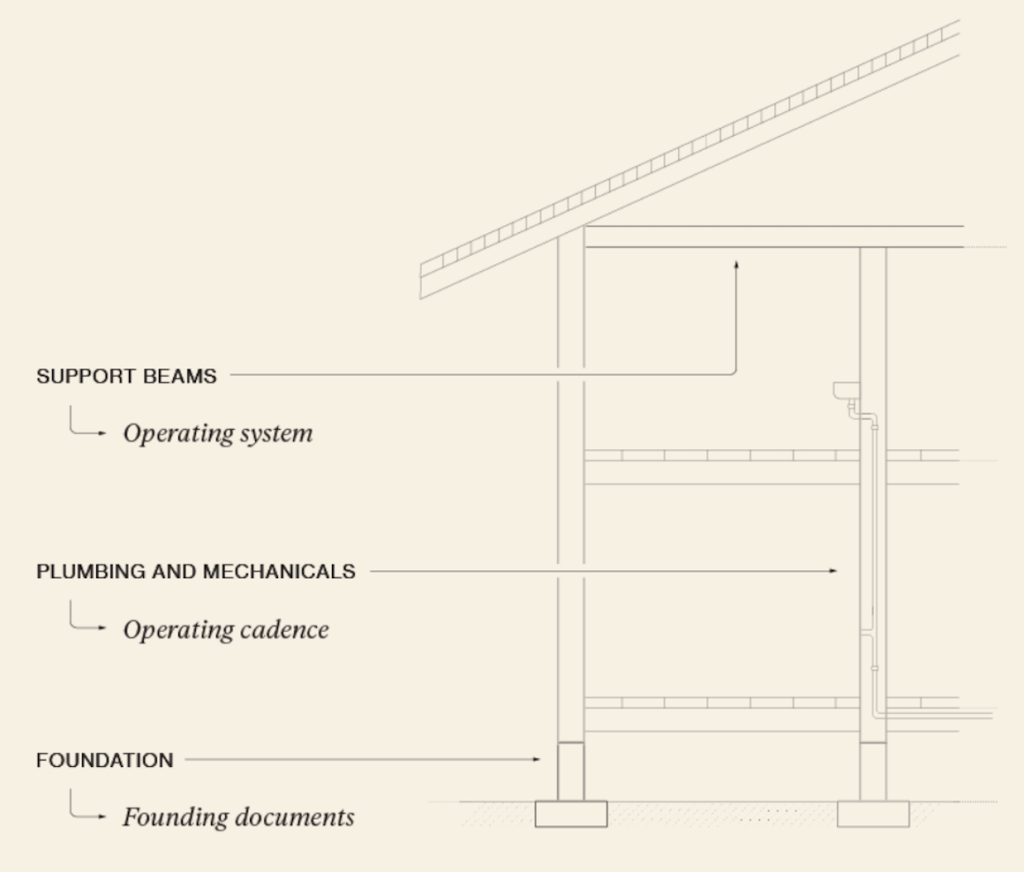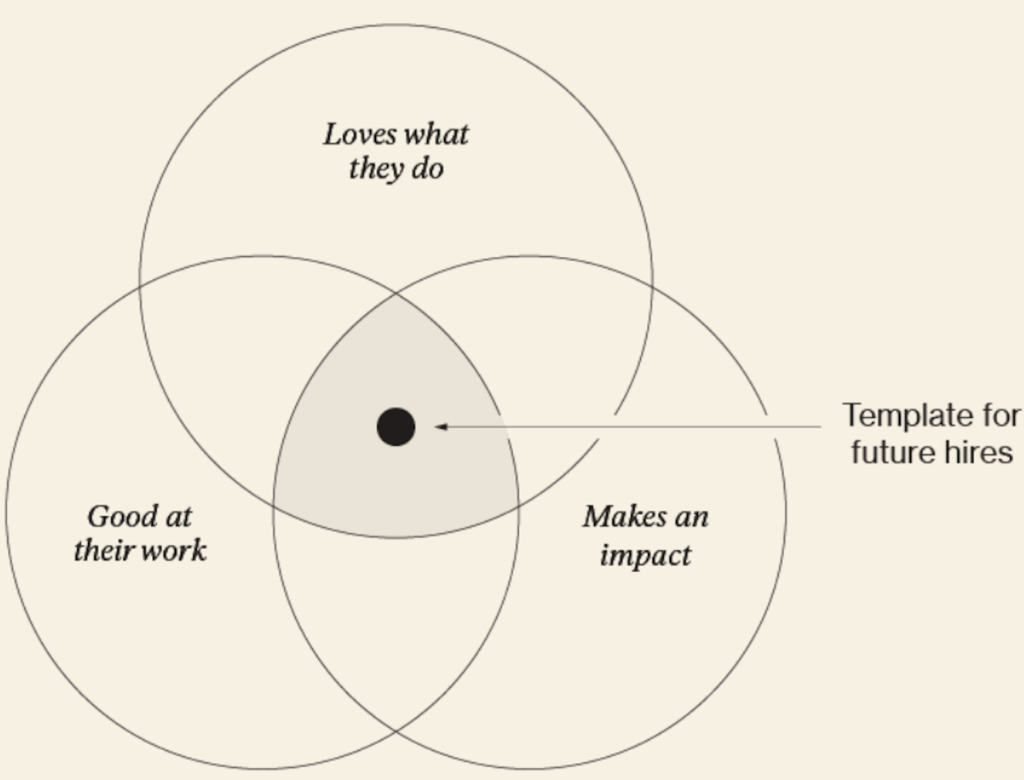
.
Review: Scaling People” by Claire Hughes Johnson presents vital tactics for building a successful company. Johnson highlights the importance of refining people processes, hiring right, fostering a growth mindset, and enhancing communication. The book makes clear the need for defined roles, performance goals, and regular feedback, using real-world examples for illustration. Whether you’re an entrepreneur, a manager or a team leader, this book has something for you. Strongly recommended.
Key takeaways:
- Operating Principles: These are a set of mental models that guide decision-making in work and team management. They are like a personal value system, and their main purpose is to build trust.
- Say the Thing You Think You Cannot Say: Open communication is vital for building trust. This involves sharing feelings, being measured, and separating people from tasks or ideas. Challenges arise from the dynamics between task discussion, relationships, and personal stances.
- Build Self-Awareness to Build Mutual Awareness: This involves understanding your value system, identifying your work style and decision-making tendencies, and being clear about your skills and capability gaps. Key tools for this include self-reflection, personality assessments like DiSC, MBTI, Insights Discovery, and Big Five Personality Test. Self-awareness helps optimiSe team composition and operation.
- Management vs Leadership: Management involves executing tasks well and creating stability, while leadership is about setting direction and driving change, often involving discomfort. Technical problems are for management to solve, while adaptive problems require leadership.
- Balance of Skills and Capabilities: Both innate capabilities and developed skills form your strengths. As a manager, it’s important to understand your strengths and weaknesses and build diverse teams that complement each other.
- Adaptability: Leadership often involves dealing with adaptive problems and driving change, which can cause discomfort. However, this ability to adapt is critical for growth and success.

- Founding Documents: Documents including the company’s mission, long-term goals, values, and team charters that provide a roadmap for the company’s operation.
- Operating System: A shared set of norms and actions providing clarity for everyone on the desired results, communication progress, and success measurement.
- Operating Cadence: Create an operational rhythm that suits the team and facilitates progress reports and decision-making. Good processes provide clarity and speed up execution. Beware of defensive or stale processes, and experiment with new ones as needed.
- Warning Signs of Poor Operating Systems/Cadence: Unclear goals, timelines, or ownership; slow progress; inability to suggest solutions; lack of simple information on work status; confusion about decision-making or company priorities; lack of participation in meetings; unclear importance of updates or meetings.
- Prioritisation Framework: Google uses a 70-20-10 Priority Framework (70% core business, 20% emerging product, 10% R&D), while Stripe prioritises existential risk, core product, new product, and foundational company work in order. Leaders should focus on work that mitigates risks and adds value.
- Goals and OKRs: Should be user-oriented, possible yet challenging, and assessable, with distinct objectives (where to go) and key results (how to get there).
- Metrics: Should cascade from company-level down to individuals and be reviewed regularly.
- Ownership: Every goal or metric should have an owner responsible for the work. Ownership should be defined early to avoid negative impact on team culture.
- Internal Communication: Clear communication policy and trust building are important. Companies should invest in internal communications when they reach about 150 people. A written communication strategy can equalise information access, encourage thoughtful discussion, and improve efficiency.

Recruitment Process:
- The entire company should be involved in hiring and prioritise it consistently while adhering to the operational and cultural standards set.
- Talent acquisition should be approached like sales and marketing, with a focus on building a talent brand and optimising conversion through various stages.
- Whenever possible, start with the talent you know, develop them, and promote from within.
- For early-stage companies growing quickly, my experience has been that at least 1/3 of promotions should come from within. Fewer than this and you’re not investing enough in developing existing talent. 1/3 should also come from outside: At an early stage, your company is unlikely to have the talent pool it needs to hire internally only. The final third is a toss-up.
- Hiring should be seen as everyone’s job, and there should be internal guides to outline everyone’s role in the recruiting and hiring process.
- Hiring process begins with clear objectives and cultural principles, and includes three broad steps: recruiting, hiring, and onboarding.
➊ Recruiting
- Develop insights on what makes a good hire, what perspectives and experiences are missing, and the motivation factors.
- Design job descriptions that attract the right candidates, provide clear expectations and give details about the company culture.
- As the company scales, it is necessary to work towards hiring more leaders. The type of leader needed should be clearly defined, and the decision between hiring internally or externally must be well-thought.
➋ Hiring
- It is important to have a clear job description, define who will conduct the interviews, and train your interviewers effectively.
- The best interviews suss out how someone:
➊ Works with other people
➋ Gets quality work done themselves
➌ Motivates and develops themselves
➍ Has or can develop the expertise needed for the role
➎ Demonstrates leadership and resilience - Ask candidates about their self-awareness and willingness to learn.
- Amazon’s Bar Raiser program and Stripe’s “Elevate” Interviewer are examples of organisations upholding high standards in their hiring process.
➌ Onboarding
- Onboarding should be tailored to the company’s unique qualities and include an introduction to the company’s mission, business goals, and company culture.
- A systematic onboarding curriculum can provide a more structured introduction to the company.
- It’s essential to clearly illustrate how a new hire’s work contributes to the overall company goals.
tbc…
Buy on Amazon
◃ Back